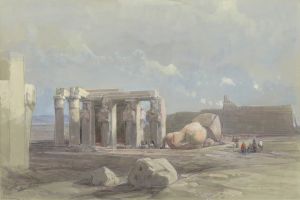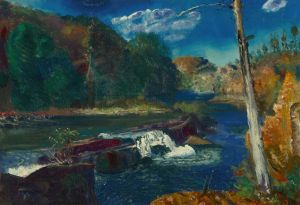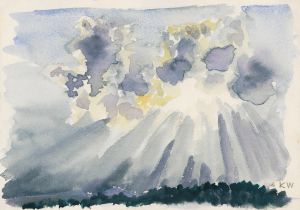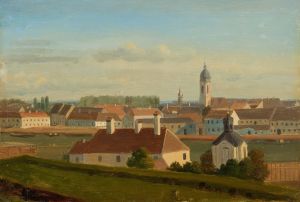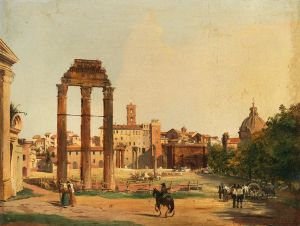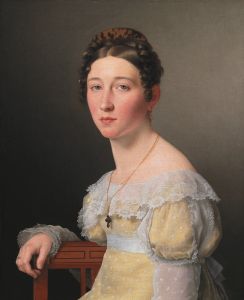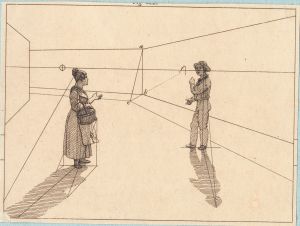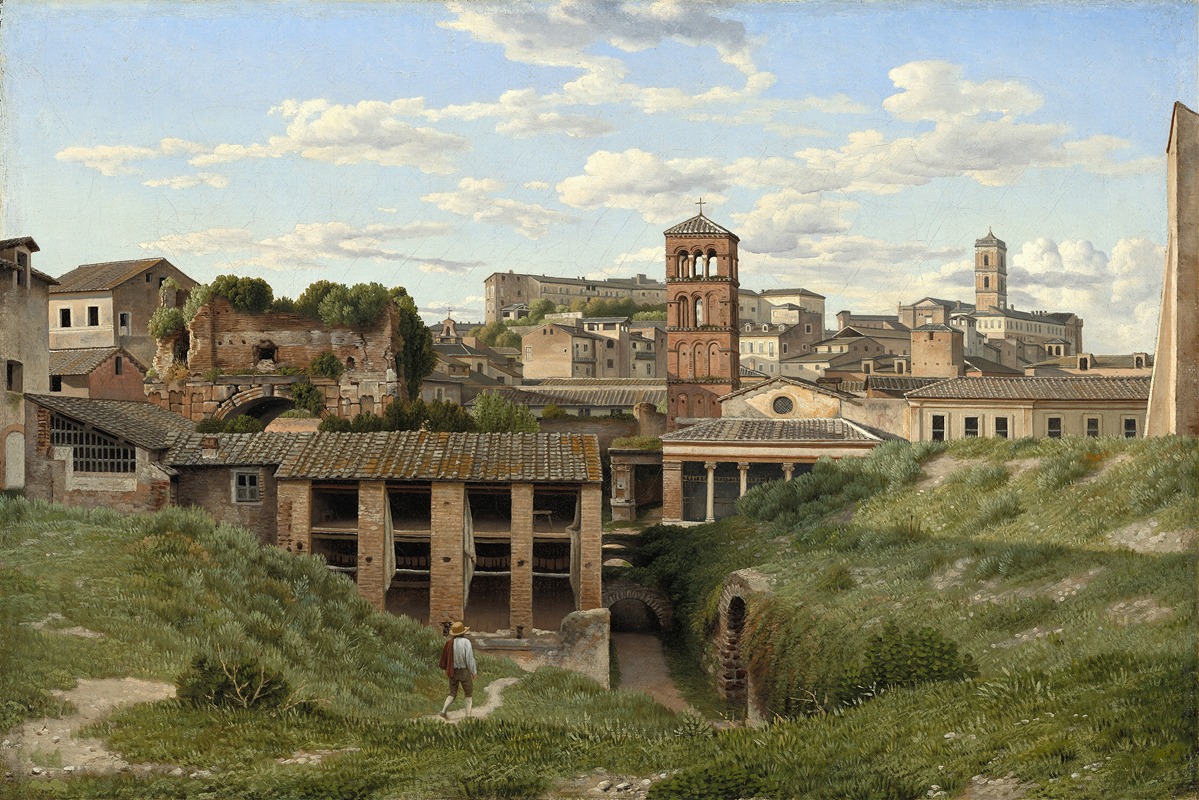
View of the Cloaca Maxima,Rome
A hand-painted replica of Christoffer Wilhelm Eckersberg’s masterpiece View of the Cloaca Maxima,Rome, meticulously crafted by professional artists to capture the true essence of the original. Each piece is created with museum-quality canvas and rare mineral pigments, carefully painted by experienced artists with delicate brushstrokes and rich, layered colors to perfectly recreate the texture of the original artwork. Unlike machine-printed reproductions, this hand-painted version brings the painting to life, infused with the artist’s emotions and skill in every stroke. Whether for personal collection or home decoration, it instantly elevates the artistic atmosphere of any space.
Christoffer Wilhelm Eckersberg, often referred to as the father of Danish painting, created the artwork "View of the Cloaca Maxima, Rome" during his stay in Italy in the early 19th century. Eckersberg was a pivotal figure in the Danish Golden Age of painting, and his works are celebrated for their clarity, precision, and attention to detail. This particular painting is a testament to his skill in capturing architectural and natural elements with remarkable accuracy.
The Cloaca Maxima, one of the world's earliest sewage systems, was constructed in ancient Rome and is a significant historical and engineering landmark. It was originally built to drain local marshes and remove the waste of one of the world's first metropolises. By the time Eckersberg painted it, the Cloaca Maxima had already stood for centuries, a testament to Roman engineering prowess.
Eckersberg's depiction of the Cloaca Maxima is not just an architectural study but also an exploration of light and atmosphere. The painting captures the serene environment surrounding the ancient structure, with a focus on the interplay between the man-made and natural worlds. The artist's attention to detail is evident in the way he renders the texture of the stone and the reflection of light on the water. This meticulous approach is characteristic of Eckersberg's work, reflecting his training and his dedication to portraying reality as faithfully as possible.
During his time in Rome, Eckersberg was deeply influenced by the classical architecture and the Italian landscape, which is evident in this painting. His works from this period often reflect a harmonious balance between human creations and nature, a theme that resonated with many artists of the time who were inspired by the ideals of the Enlightenment and the burgeoning Romantic movement.
Eckersberg's time in Italy was crucial for his development as an artist. He studied at the prestigious Accademia di San Luca and was influenced by the works of masters such as Raphael and Michelangelo. This exposure to classical art and architecture deeply informed his style, which combined the precision of neoclassicism with a burgeoning romantic sensibility.
"View of the Cloaca Maxima, Rome" is a fine example of Eckersberg's ability to blend these influences. The painting is not only a representation of a historical site but also a reflection of the artist's own journey and growth. It stands as a piece of historical documentation, capturing a moment in time with both artistic and historical significance.
Eckersberg's contribution to art extends beyond his own works. As a professor at the Royal Danish Academy of Fine Arts, he influenced a generation of Danish artists, instilling in them the principles of observation and precision that he so valued. His legacy is evident in the works of his students, who carried forward his dedication to realism and detail.
In summary, "View of the Cloaca Maxima, Rome" is more than just a painting of an ancient Roman sewer. It is a reflection of Christoffer Wilhelm Eckersberg's artistic journey, his dedication to capturing the essence of his subjects, and his influence on the course of Danish art. The painting remains a significant piece within the context of 19th-century European art, embodying the intersection of history, architecture, and the natural world through the eyes of a masterful artist.





